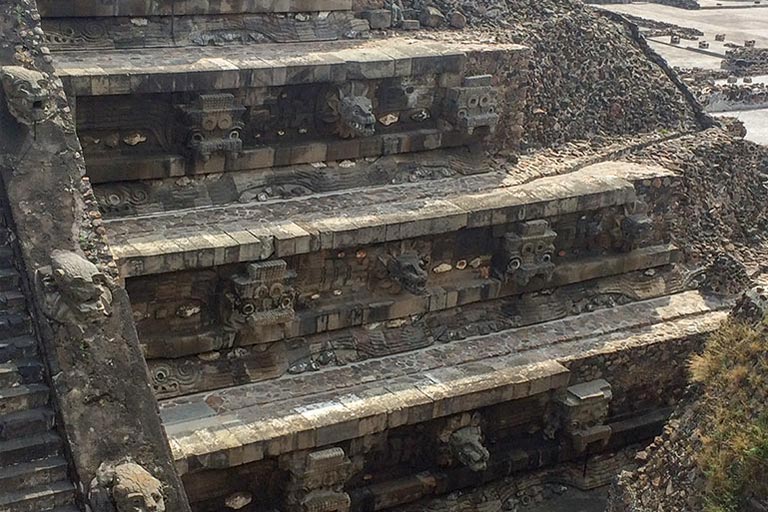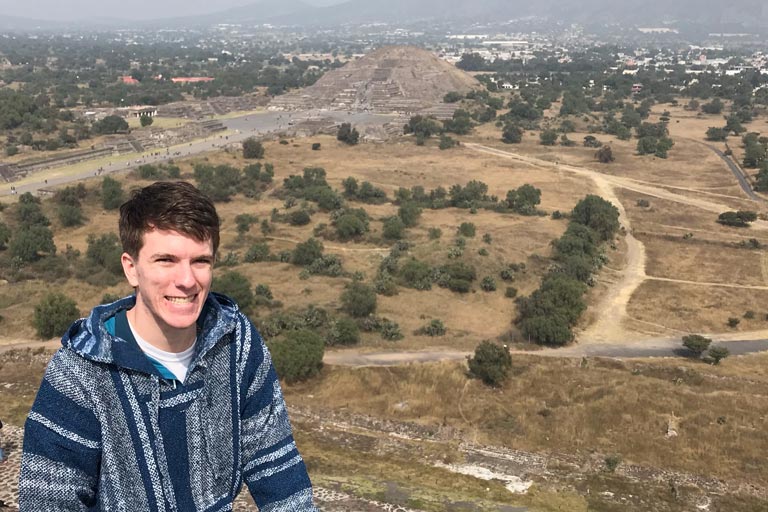Owen Barbour: Student Report from 2018 Alternative Winter Break to Mexico
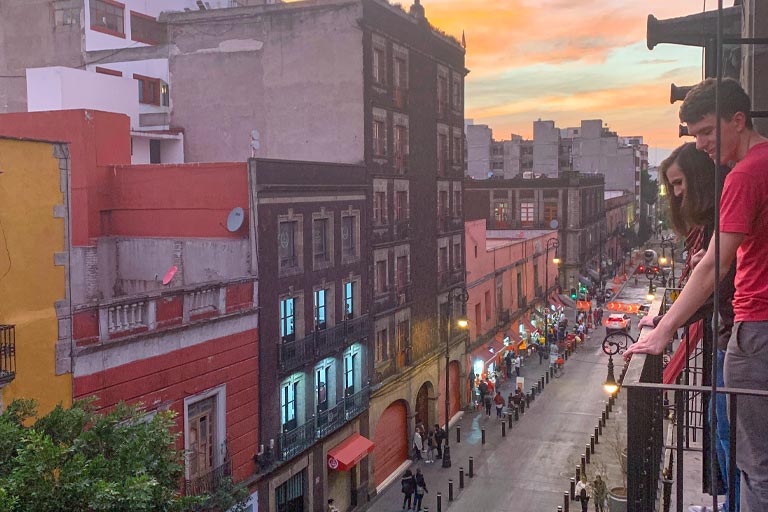
Before taking this trip, I had never been on an airplane, let alone out of the country. To my relief, everything went fairly smoothly on the way to Mexico. I arrived in Mexico City from the last leg of my flight and found another traveler, Connor, and eventually our guide, Assul, after walking around the airport and feeling slightly out of place. Thankfully, Assul was there to guide us to a bus that would take us to our travel companions’ terminal.
After waiting for everyone to arrive, we began the awkward process of getting to the Hostel Amigo Suites near the Zócalo (the main square). This was the first culture shock that I experienced: as I held onto the door of our Uber transport, our driver calmly squeezed us through the streets of the city, some of which had sprawling pop-up shops amongst lane-splitting bikes and motorcycles.
Before dinner that night, we had the chance to see the sinking Catedral Metropolitana and the Palacio de Bellas Artes. The next day, before going to the City of Puebla, we had the opportunity to visit the ancient pyramids of Teotihuacán. After seeing what I now know to be the Temple of the Feathered Serpent, we walked along the Avenue of the Dead to the Pyramid of the Sun. After getting fairly sunburned, we ate lunch and I had my first taste of fried cactus leaves.
We made it to Puebla and looked around some. That next day we saw the city square, the cathedral, and the cultural/art museum among many other things. At the end of the day, we were off to the town of Cuetzalan, also in the state of Puebla, near where our project was located.
As for our project, it took about two full days’ worth of work split among three days. This project was located on an ecological farm, which is also a free post-secondary school, offering topics such as sustainable practices with agriculture and economics.
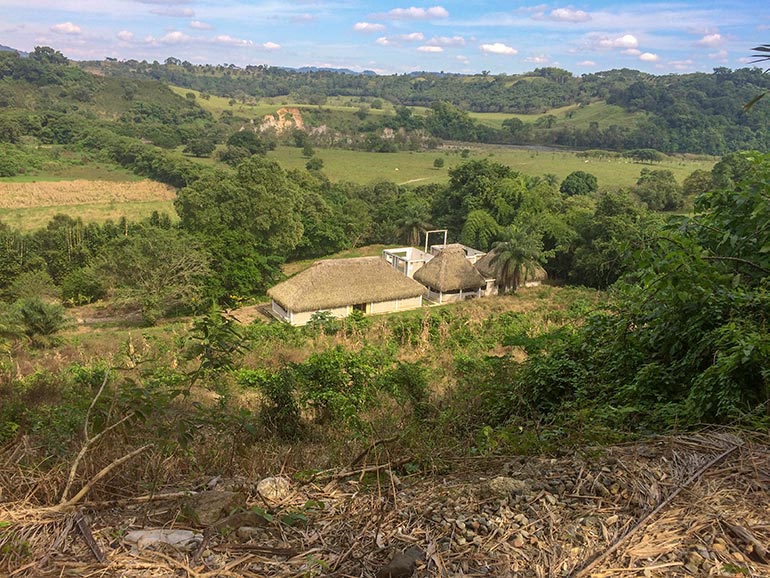
Hilltop perspective at the ranch
The actual project was building a dry bathroom, mostly from bamboo. The waste can later be used for non-food crop compost. The structure was located at the edge of the farm near the training area. Our work process involved cutting down the mature bamboo stalks, splitting some of them into halves for the walls with machetes, stripping palm leaves for the roof, and the actual construction. I believe that many of us were proud to exceed the farm workers’ expectations in many parts of this process. While there, we males of the trip slept in one of the semi-outdoor classrooms on cots where one night I was awoken by what I believed to be a fox whining.
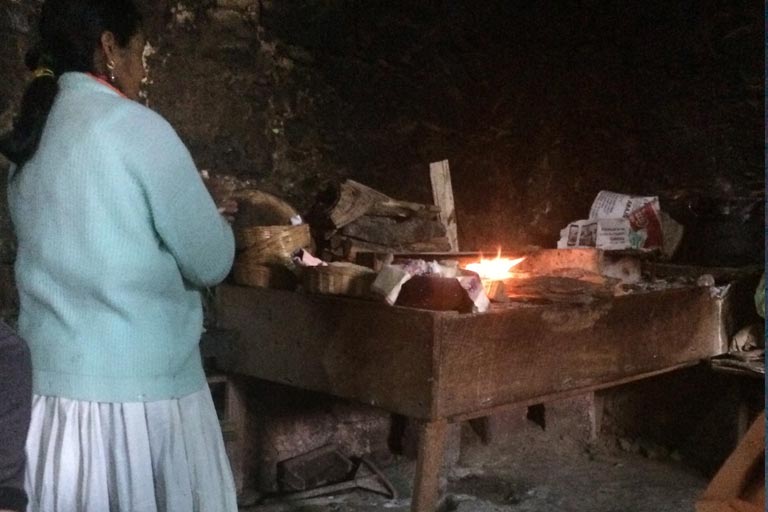
An indigenous cook in Cuetzalan uses open-flame preparation
Following our project and returning to Cuetzalan, we took a tour of the city and saw several key places including the market and the flying dancer’s pole. The place where we ate dinner was definitely an experience, as we had traditional Mexican food, including handmade tortillas and food cooked over a fire. The next day, our last full day in Mexico, we visited a waterfall in nearby Atepatahua, as well as the pyramids in Yohualichan. Overall, this trip packed in many historical and cultural experiences in both urban and rural environments.

Panoramic view of the Yohualichan Archaeological site
